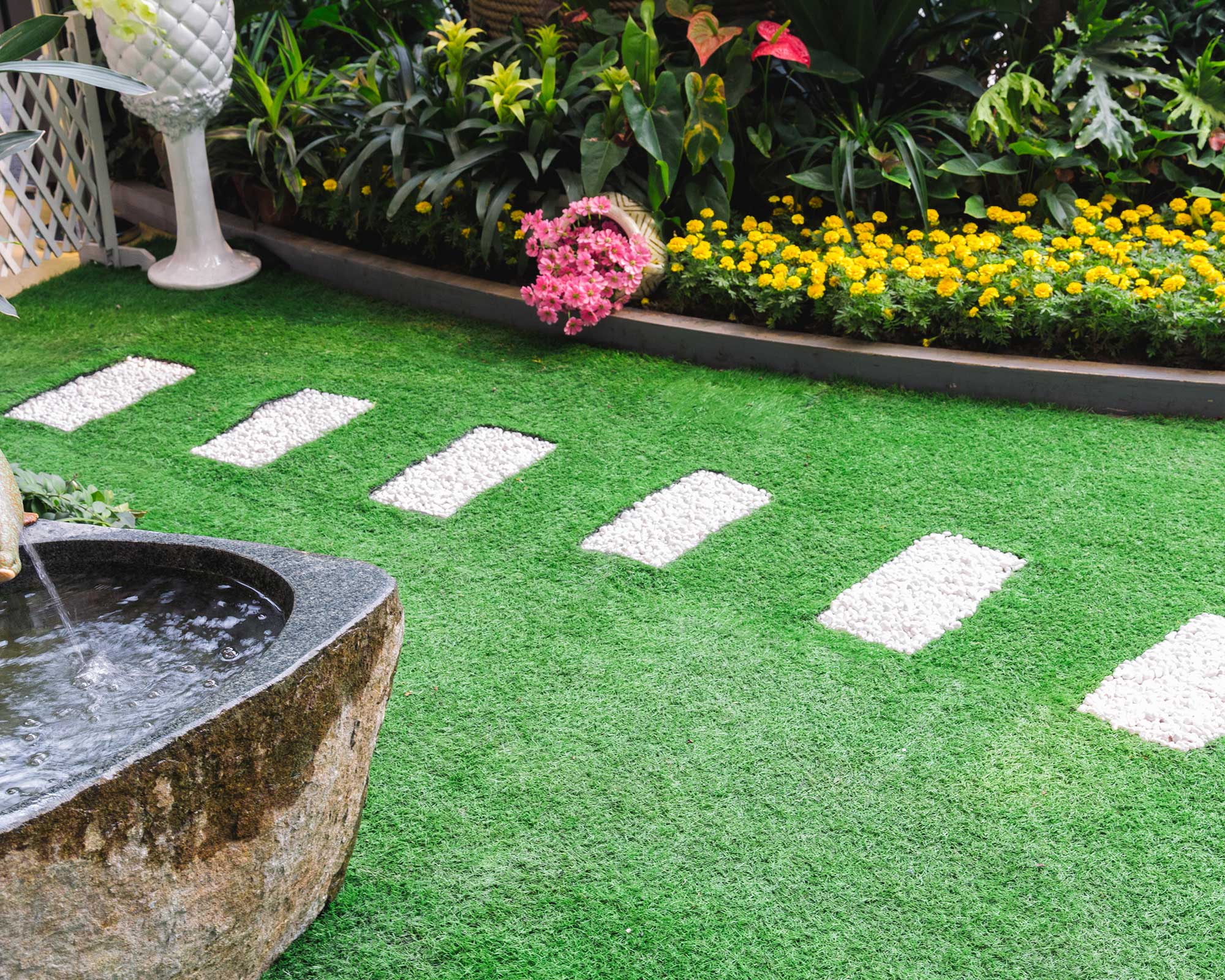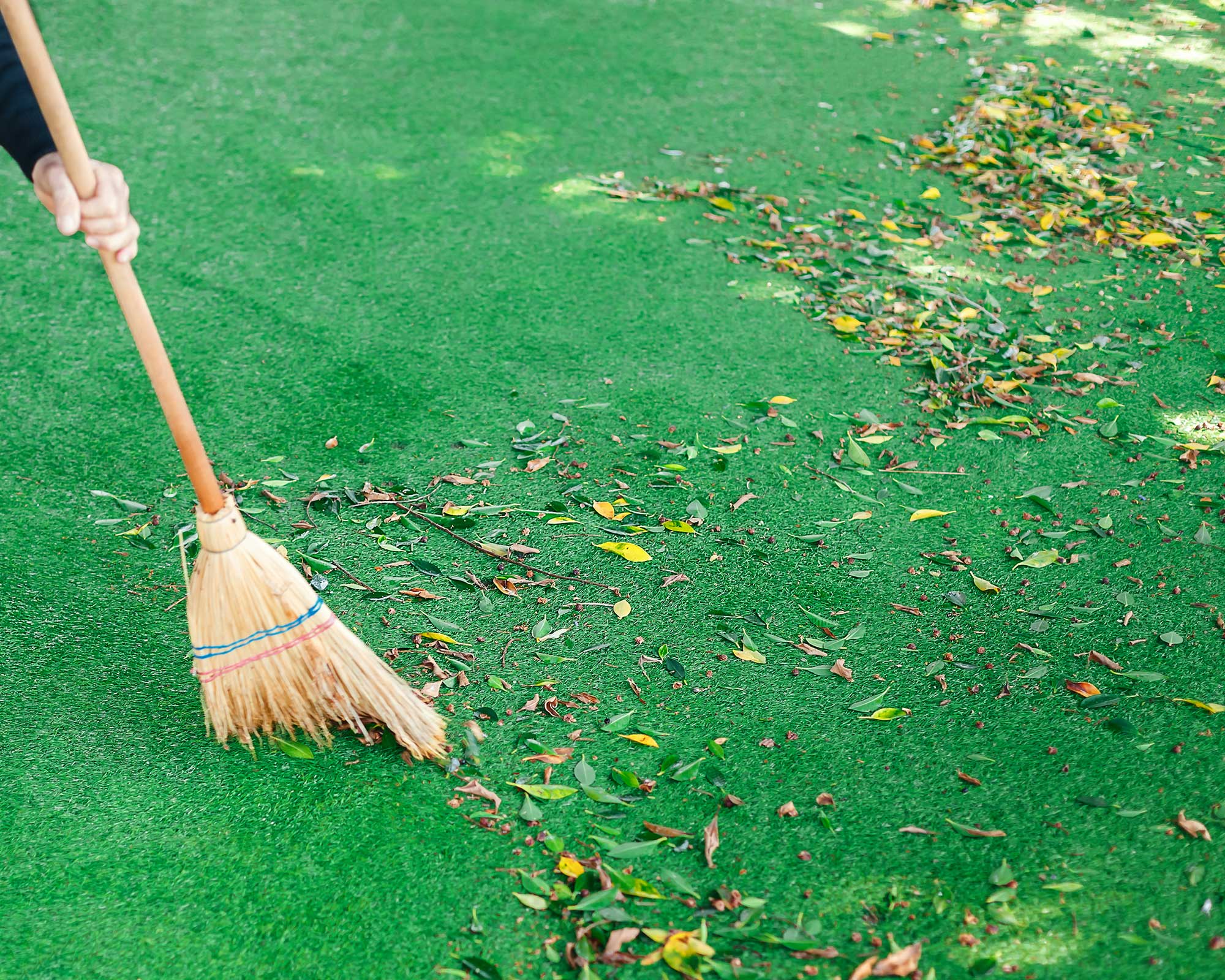How to clean artificial grass quickly and easily: top tips from the experts
Learn how to clean artificial grass and keep your lawn looking fresh all year


Wondering how to clean artificial grass? When it comes to lawn care, artificial grass is much easier to maintain than seeded turf: there are no lawnmowers needed, and you don't have to feed it, either. But now and again, you will need to give it a spruce to keep it looking fresh.
Each blade of artificial grass is usually made from a mixture of different plastics. It can last 15–20 years when it's properly maintained, and it's a great option for smaller-sized yards, a low maintenance garden, or for areas that don't get much sunlight.
Jemma Dayman at Carpetright comments; 'An affordable, low maintenance solution to garden design, artificial grass has become an increasingly popular choice for compact outdoor spaces. The durable finish mimics the feeling of natural grass under foot, and is easy to maintain by virtue of the dirt-resistant fibers.'
Best of all, artificial grass can't be dug into, which makes it an ever-popular choice for people with pets prone to digging, or when you're planning how to design a child friendly garden.

Artificial grass makes your backyard maintenance easy
5 useful tips on how to clean artificial grass
Experts at Tapi, leading carpet and flooring specialists, say: 'Grass is high maintenance and if it gets a lot of traffic from pets and children, it can take a lot of work to restore. Artificial grass is much easier to maintain and clean, giving you the real look of grass, without the hassle.'
So how do you keep artificial grass clean? Rainfall will lift and clear a certain amount of the dirt that accumulates, but you'll still want to manually clean it on a regular basis. This is so you can remove surface-level dirt and debris, as well as any debris that has become buried between the fibers.
These tips on how to clean artificial turf will help you get your lawn looking its best again:
- Start by giving the grass a brush with a broom (avoid ones with metal or wire bristles) to remove any leaves and general dirt.
- Give surface stains and spills a quick once over with a damp sponge, then use a paper towel to blot away the moisture. For more stubborn marks, try a 50:50 mix of vinegar and water.
- To get rid of unwanted odors, you can spray on a dedicated product, such as this Simple Green odor eliminator spray from Amazon, following the application instructions.
- For a more thorough clean, use a garden hose from a short distance to gently soak the grass for a short while, or use a bucket of warm, soapy water.
- Alternatively, you can bring out the leaf blower to get rid of debris.

A stiff bristled broom is useful for cleaning artificial grass
What not to do when cleaning artificial grass
There are a few things to bear in mind when giving your artificial grass a thorough clean:
- You don't have to dry the grass with a heat source. In fact, this is likely to damage the plastic. Instead, leave it to dry naturally in the sun.
- Although it may be tempting, don't use your indoor vacuum cleaner on it, as the powerful suction can damage both the grass and the vacuum itself. A dedicated garden vacuum or your best leaf blower will be much more sensible.
- Avoid using particularly sharp tools to try and pry up stubborn or dried-on dirt, as this can damage the grass.

Keeping to a regular cleaning schedule will mean your artificial grass stays looking fresh
How often should you clean your artificial grass?
The key to artificial grass maintenance is little and often. The experts at Tapi say 'the easiest way to keep your artificial grass in tiptop condition is to brush it weekly. Organic matter such as dust, leaves, bugs, and other debris can become lodged between the fibers, and over time this will decompose and form soil. This can lead to drainage problems and damage to the fibers or the latex backing. When it comes to deep cleaning, every four weeks or so should be fine.'
In the summer when you're outside most of the time it's worth cleaning it more often – whereas in the winter, the rain will take care of the cleaning for you.
Sometimes algae can grow at the base of the blades. If you're seeing black patches appear on your grass, then it's high time to give it a clean.

Clean your artificial grass regularly to avoid algae
Can you jet wash fake grass?
It's fine to use your best pressure washer on artificial grass, but make sure to remove any obvious detritus first. You should also check for pet or animal feces before jet washing.
Although it's not the case with all artificial turf, a type of silica sand is often used as an infill to provide support to the blades from the base. It weighs the grass down, protects the turf, and also allows for drainage when it's rained on or cleaned. This sand should be heavy enough not to move when the wind blows, but be forewarned that using high-powered tools might shift it around a bit.

An artificial grass lawn can look just like the real deal
How can you make your artificial grass look new again?
Of course, you want your artificial grass to look natural and lively, but sometimes the fibers can lay rather flat and give a dull impression. This can often happen if something heavy sits on it for an extended period – storage boxes, outdoor seating, and pools can all leave a mark.
In this instance, all you need to do is grab a stiff broom with synthetic bristles like this Windslow&Ross artificial turf rake from Amazon, and brush against the grain to allow the blades to spring up again. What's more, this will help to prevent it from matting or compacting.
Just make sure not to use a brush that has wire or metal bristles as this is highly likely to damage the fibers.

Freelance writer and author Flora Baker is a keen amateur gardener and houseplant enthusiast. Her small garden in South London is a constant work in progress as she gets to grips with snail prevention, DIY trellises and what to plant in shady spots overrun with ivy.
